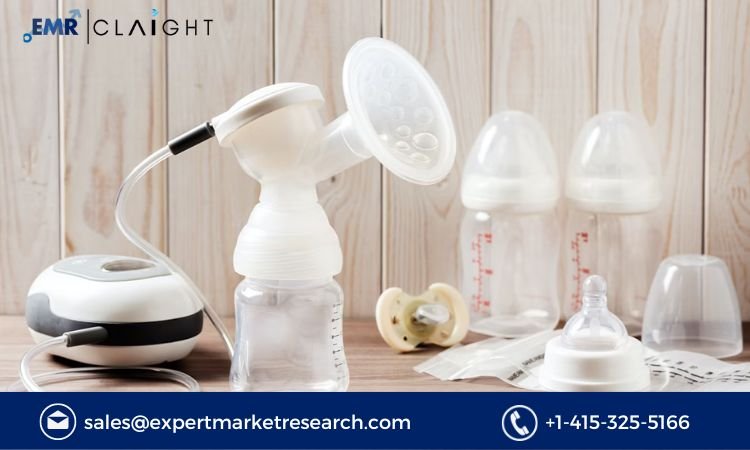This report aims to provide stakeholders with a comprehensive analysis of the breast pumps market, focusing on trends, drivers, and challenges from 2023 to 2032. The report is intended to assist investors, manufacturers, and distributors in making informed decisions regarding their strategies in this market.
Scope of the Report
The scope encompasses an examination of different types of breast pumps, their applications, and the distribution channels through which they are sold. The analysis covers major geographic regions, including North America, Europe, Asia Pacific, Latin America, and the Middle East and Africa.
Methodology
The methodology includes quantitative and qualitative research, combining primary data (interviews with industry experts and surveys) with secondary research (industry publications, reputable databases, and company reports). Statistical and thematic analysis techniques are employed to interpret the data and forecast market trends.
Market Overview
Definition and Function of Breast Pumps
Breast pumps are mechanical devices used by lactating women to extract milk from their breasts. They are crucial for mothers who are unable to nurse directly due to medical conditions, work commitments, or personal preferences.
Historical Market Context
The market was valued at USD 3.43 billion in 2023. Historical growth has been influenced by social changes, technological advancements, and evolving healthcare recommendations regarding breastfeeding.
Key Growth Drivers
- Increasing number of working women: More women are returning to work post-childbirth, increasing the need for efficient and convenient breast pumping solutions.
- Rising awareness of the benefits of breastfeeding: Global health authorities emphasize breastfeeding’s health benefits, influencing more mothers to choose breastfeeding.
- Growing disposable income: Higher household incomes allow families to invest in premium breast pump products.
Market Dynamics
Drivers
- Technological advancements: Innovations such as double pumping and hands-free models enhance convenience and efficiency.
- Government initiatives: Programs encouraging breastfeeding and workplace lactation support are increasing in many countries.
Restraints
- High cost: Premium breast pumps are expensive, making them inaccessible to lower-income segments.
- Availability of substitutes: Formula milk and other feeding methods provide alternatives to breastfeeding, potentially restraining market growth.
Opportunities
- Emerging markets: Increasing urbanization and healthcare investments in developing countries provide new opportunities for market expansion.
- Product innovation: Continued advancements in product design and functionality offer significant growth prospects.
Market Segmentation
By Product Type
- Manual Breast Pumps: Less expensive but require physical effort, appealing to cost-conscious consumers.
- Electric Breast Pumps: Offer efficient extraction and varying suction levels; preferred by working mothers.
- Battery-powered Breast Pumps: Provide mobility and convenience for on-the-go mothers.
By Application
- Personal Use: Products designed for individual mothers, featuring ease of use and portability.
- Hospital Grade: Used in hospitals and rental programs, designed for long-term durability and multiple users.
By Distribution Channel
- Retail Stores: Traditional purchasing venues offering customer service.
- Online Stores: Provide convenience, competitive pricing, and wide product selections.
- Pharmacies: Important for immediate purchases and often offer additional healthcare guidance.
Competitive Landscape
Overview of Key Players
This section provides an in-depth look at the strategies, market positions, and product portfolios of leading companies such as Medela AG, Philips, and Ameda, Inc.
Strategic Developments
- Mergers and Acquisitions: Companies are actively engaging in M&A to expand their product offerings and global footprint.
- Investments and Expansions: Significant investments in new facilities and the expansion of existing ones to meet growing demand.
- Product Innovations: Focus on developing smarter, more user-friendly pumps that enhance the pumping experience.
Geographic Analysis
This section explores market dynamics within specific regions, analyzing demographic trends, healthcare infrastructure, and regional regulatory environments that impact market performance.
Regulatory and Legal Landscape
A detailed review of the regulatory frameworks governing medical devices in various regions, focusing on compliance requirements and the impact on market entry strategies.
Market Forecast and Trends
Future Projections
Detailed forecasts of market growth, expected innovations, and potential market disruptors from 2024 to 2032.
Key Trends
Emerging trends such as the integration of AI for personalized pumping settings, increased focus on sustainable and BPA-free materials, and the growth of digital platforms for user support.
Challenges and Barriers
Discussion of operational challenges, competitive pressures, and regulatory hurdles, with strategies for market players to address these issues effectively.
Trending FAQ
1. What are the latest technological advancements in breast pumps?
Answer: Recent technological advancements in breast pumps include the development of wireless and app-connected models that allow users to monitor and control pump settings via their smartphones. Innovations also include improvements in the efficiency of electric pumps, quieter operation, and more ergonomic designs that mimic natural breastfeeding rhythms.
2. How is the increasing number of working women impacting the breast pumps market?
Answer: The rising population of working women globally is significantly impacting the market as demand for convenient and time-efficient breast pumping solutions increases. This demographic shift is driving the development of more portable and discreet products that can be used during work hours.
3. What are the main factors driving the growth of the breast pumps market?
Answer: Key factors driving market growth include increasing awareness of the benefits of breastfeeding, higher disposable incomes, and supportive government initiatives that encourage breastfeeding through laws that mandate breastfeeding breaks at work and provide facilities for pumping at workplaces.
4. Which region is expected to see the most significant growth in the breast pumps market?
Answer: The Asia Pacific region is expected to witness the most significant growth due to increasing urbanization, rising female workforce participation, and improving healthcare infrastructure. Additionally, growing awareness and changing cultural attitudes towards breastfeeding are contributing to this growth.
5. Are there any environmental concerns associated with breast pumps?
Answer: Yes, environmental concerns include the disposal of electronic components of electric and battery-powered pumps and the use of BPA (bisphenol A) and other plastics in manufacturing. Manufacturers are increasingly moving towards more sustainable practices, including using BPA-free and recyclable materials.
Media Contact:
Company Name: Claight Corporation
Contact Person: Joe Goldberg, Business Consultant
Email: sales@expertmarketresearch.com
Toll-Free Number: US +1-415-325-5166 | UK +44-702-402-5790
Address: 30 North Gould Street, Sheridan, WY 82801, USA
